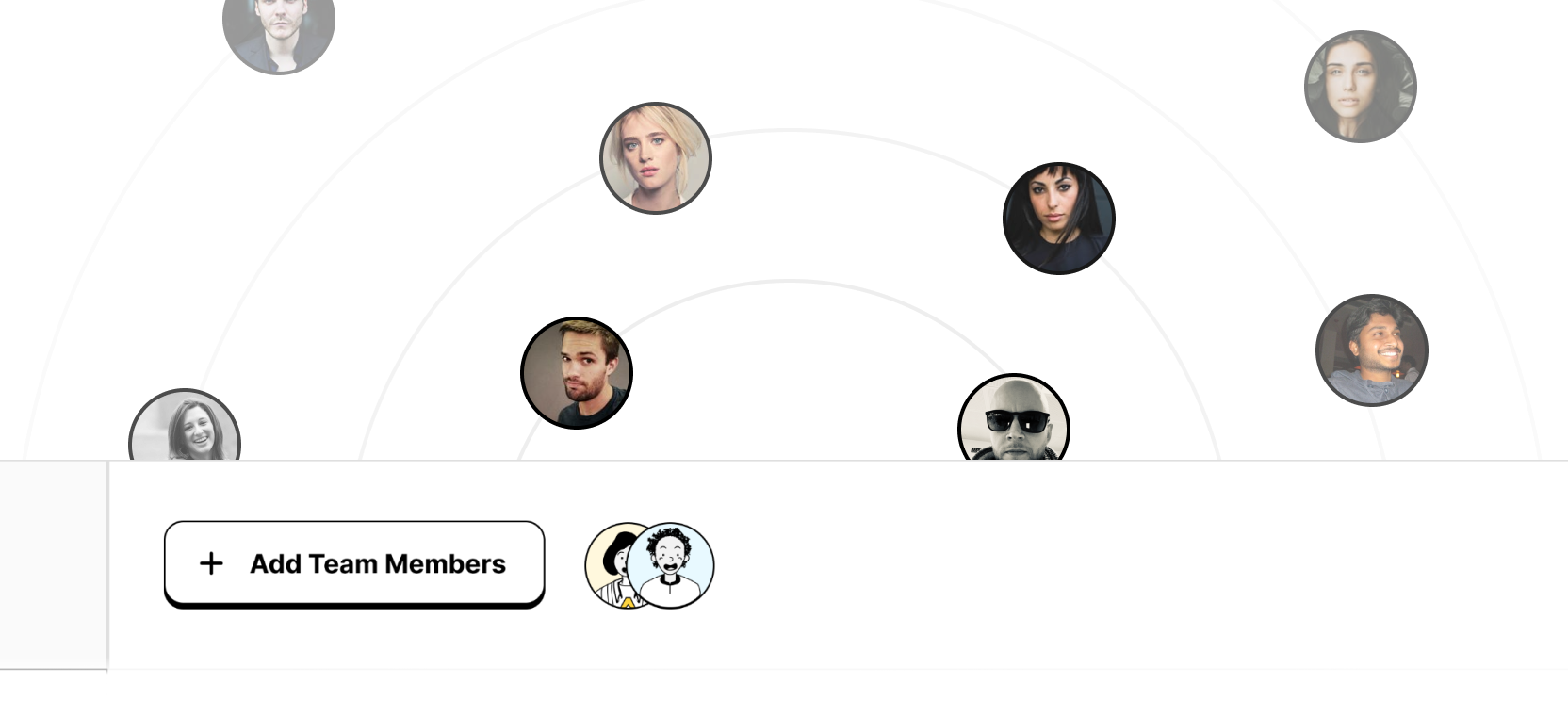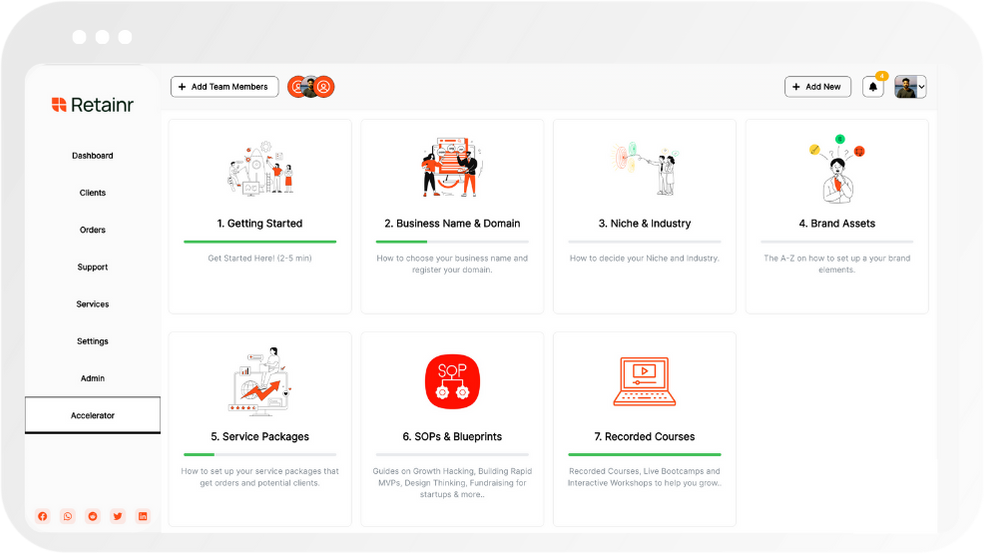
How to Handle Customer Support and Feedback Like a Pro
Build with Retainr
Sell your products and services, manage clients, orders, payments, automate your client onboarding and management with your own branded web application.
Get Started1. What are the best strategies for handling customer support and feedback professionally?
Effective Communication Strategies in Customer Support
Customer support professionals can use a number of strategies to communicate effectively with customers. The first is to always be polite and respectful, regardless of the situation. It's also essential to be patient and empathetic, listening to the customer's concerns without interrupting. The second strategy is to use clear and simple language, avoiding jargon that may confuse the customer.
- Politeness and respectful attitude
- Patience and empathy
- Use of clear and simple language
Turning Feedback into Action
Customer feedback may sometimes be difficult to handle, but being able to transform it into positive changes is vital. The key is to acknowledge the feedback, regardless of whether it’s positive or negative. Then, assess the feedback unbiasedly and consider its possibilities. Finally, utilize the feedback to improve product or service offerings and enhance customer experience.
| Acknowledge | Appreciate the feedback |
| Assess | Dispassionately evaluate the feedback |
| Utilize | Implement improvements |
Mastering the Technology
In this digital age, mastering technology is an essential strategy. Customer support professionals should be familiar with CRM (Customer Relationship Management) software, and be efficient in using chat and email to handle customer support. Also, they need to become adept at using social media channels to manage customer reviews and feedback.
- Proficiency in CRM software
- Efficiency in chat and email support
- Proficiency in social media management
2. How can one improve their skills in handling customer support and feedback?
Ways to Improve Skills in Handling Customer Support
There are several ways to enhance your skills in managing customer support. With consistent practice and effort, these skills can significantly enhance your performance in this field:
- Communication Skills: This is arguably the most important skill for anyone in customer service. Develop your ability to listen attentively, speak clearly, and maintain a positive tone.
- Problem Solving Abilities: Quickly getting to the root cause of customers' issues and finding effective solutions is crucial. This entails patience, empathy, and high analytical skills.
- Technical Know-How: Knowing your products or services inside out makes it easier to resolve customers' concerns. Regular training and consistent learning will help you maintain your technical edge.
Acquiring Customer Feedback Skills
The ability to solicit, understand, and act upon customer feedback is instrumental in providing excellent customer service. Here are a few ways to improve your competency in dealing with customer feedback:
- Active Listening: Pay complete attention to what the customer is saying, and don't rush to respond before fully understanding their feedback.
- Open-Ended Questions: Asking such questions evokes detailed responses rather than simple yes/no answers. These insights are more useful in making improvements.
- Feedback Analysis: Learn how to analyze the feedback you receive to identify recurring issues or trends. This can help improve your products or services.
Key Performance Indicators (KPIs)
Knowing what to measure to gauge your effectiveness in handling customer support and feedback is also a critical skill. Here are some typical customer service KPIs:
| KPI | Description |
|---|---|
| First Response Time | This measures the time it takes to respond to a customer's inquiry or complaint for the first time. |
| Customer Satisfaction Score | This is a measurement of how satisfied customers are with your support services, usually determined via surveys. |
| Net Promoter Score | This measures how likely customers are to recommend your company to others, a strong indication of overall customer experience. |
3. What should be the approach to deal with negative customer feedback like a pro?
Investigate, Understand and Validate
Your first step in dealing with any negative customer feedback is to ensure you fully investigate and understand the complaint. Gather all the necessary details like customer's past interactions, purchase history, and any relevant information that would assist in understanding the context better. On establishing the facts, validate the customer's feelings because regardless of the situation, their feelings are their reality.
Practical Steps to Take
- Apologize: Start your communication by acknowledging the issue and apologizing. Even if you're not at fault, an apology can help soothe irate customers.
- Direct Communication: Reach out to the customer directly if possible, it shows them that their feedback is valued.
- Solution: Depending on the particular issue, provide a solution. If it's a product fault, offer a replacement, refund, or repair. If it's a service concern, explain how procedures will change to prevent a recurrence.
- Follow-up: Don't stop at just providing a solution. Check on your customers to ensure they're satisfied with the measures you've taken.
Negative Feedback Handling Flow Chart
| Step | Activity | Outcome |
|---|---|---|
| 1 | Investigate the issue | Determine the validity of the complaint |
| 2 | Understand customer’s feelings. | Validate their feelings |
| 3 | Communicate directly. | Make the customer feel valued |
| 4 | Provide solution | Resolve the issue |
| 5 | Follow-up | Ensure customer satisfaction |
4. Which tools and resources are beneficial in professionally handling customer support and feedback?
Essential Tools for Professional Customer Support Management
There are several tools and resources that significantly enhance a pro's ability to handle customer support and feedback proficiently. These include:
- CRM software such as Salesforce or Zoho CRM. They allow you to manage interactions with your customers effectively and efficiently.
- Help desk software like ZenDesk, Freshdesk or HelpScout. These tools facilitate the customer service process by providing a platform where customers can submit their issues or queries, and the support team can respond in a timely and organized manner.
- Live chat tools, think of LiveChat, Intercom, or Drift. They offer immediate, real-time interactions with customers, improving engagement and satisfaction.
Recommended Customer Feedback Management Tools
Equally crucial in professional customer support is the effective management of customer feedback. Here are some great resources for that:
- Survey tools such as SurveyMonkey, Google Forms, or Typeform. They allow you to gather quantitative data from customers about their experiences, perceptions, and suggestions for your business.
- Community forum software like Discourse, Reddit, or Flarum. They encourage open discussions among customers, providing valuable insights from user-generated content.
- Review management tools for instance, Trustpilot, ReviewTrackers or Yotpo. They collect and organize your product or service reviews, making it easier for you to monitor and respond to them.
Comparative Analysis of Key Customer Support Tools
To further understand how these tools can support your customer service efforts, see the comparative table below.
| Criteria | CRM Software (Salesforce) | Help Desk Software (ZenDesk) | Live Chat Tools (LiveChat) |
|---|---|---|---|
| Cost efficiency | High | Medium | Low |
| Data integration capabilities | High | Medium | Low |
| Customizability | High | Medium | Low |
| User-friendliness | Medium | High | High |
| Scalability | High | Medium | High |
5. How should a company prioritize different customer support issues and feedback?
Prioritizing Customer Support Issues
Companies should consider a few factors when prioritizing customer support issues.
- Urgency: Issues that prevent customers from fully using your product or service should be addressed first. These are what we commonly refer to as “show-stopper” issues.
- Scope of impact: Problems affecting a large number of customers should take precedence over issues affecting a small minority.
- Type of customer: If an issue affects a premium or high-value customer, it may need to be prioritized over other concerns.
- Complexity: If an issue is complex and likely to take a long time to resolve, it might be expedited to prevent further delays.
Sorting and Categorizing Feedback
Feedback should not be ignored or placed at the bottom of the priority list. In fact, it can have an immense impact on a company's growth and customer retention. Also, customer feedback should be sorted and categorized appropriately.
| Type of Feedback | Priority Level |
|---|---|
| Negative feedback on key features | High |
| Suggestions for new features | Medium |
| Positive feedback/assertions | Low |
Implementing a Support Priority System
A Support Priority System can streamline and optimize the process of handling customer support issues and feedback. Here are some steps to implement it.
- Define your priority levels: This can generally range from High, Medium, Low or even as simple as Urgent and Non-Urgent.
- Create a system for tagging and sorting issues: This helps with organization and makes it easier to track progress and performance.
- Train your team: Ensure that everyone handling customer support is familiar with this system and consistently adheres to it.
- Monitor and improve: Continually assess the effectiveness of your system and make necessary adjustments in response to shifts in business requirements and customer needs.
6. What are some effective ways to respond to customer feedback and complaints professionally?
Effective Ways to Respond to Customer Feedback and Complaints
Professionally handling customer feedback and complaints requires a strategic approach involving active listening, empathy, and sincere problem-solving abilities. The following are some effective ways:
- Be Prompt: Quick responses show the customer that their feedback is valuable and you care about their experience.
- Active Listening: Make sure to understand the problem by asking for more details if necessary before responding.
- Be Empathetic: Acknowledge the customer’s feelings and let them know that you understand their frustration.
- Solve the Problem: Try your best to resolve the issue and if you can't, ensure to escalate it to the relevant department.
- Follow-up: Contact the customer after a few days to see if their situation has been resolved to their satisfaction.
Professional Response to Feedback
A professional response to customer feedback should adequately address their concerns and assure them that their feedback is valued. You can use a table format to effectively structure responses:
| Feedback Type | Sample Response |
|---|---|
| Positive Feedback | Thank you for sharing your feedback. We’re glad you enjoyed our service! We will strive to consistently deliver great experiences. |
| Negative Feedback | We’re sorry your experience did not match your expectations. We appreciate your feedback and will do our best to improve. |
| General Query/Feedback | Thank you for your inquiry. We are dedicated to assisting you. Please provide additional details so we can address your needs effectively. |
Feedback as a Learning Resource
Every piece of feedback, whether positive or negative, is a learning resource. They pinpoint areas of strength and those that need improvement. Implement changes using this feedback and consistently inform your customers how their feedback has led to these improvements. This highlights that their opinions are valued, which in turn can boost customer satisfaction and loyalty.
7. Can you suggest some techniques to handle difficult or upset customers like a pro?
Techniques to Handle Difficult or Upset Customers
Handling difficult customers is a skill that every customer support professional has to master. In spite of the challenges, this is possible with empathy, patience and strategic approach. Here are some proven techniques:
- Stay Calm: It's essential to maintain your cool and respond softly to an upset customer. Your calm demeanor can help pacify them.
- Active Listening: Show interest in understanding their issue by asking them relevant questions without interrupting.
- Apologize Sincerely: Even if you are not at fault, apologize in a genuine manner. This can help in diffusing their anger.
- Solve their Problem: Offer a solution as fast as you can or provide a timeline for when their issue would be resolved.
- Follow Up: Check in with the customer after the resolution to ensure they are satisfied and their issue is well-handled.
Types of Difficult Customers and How to Handle Them
In customer service, it is not uncommon to come across difficult customers. Identifying the type of difficult customer and knowing how to handle them can ease the situation. Here's an outline:
| Type of Customer | How to Handle |
|---|---|
| Angry | Listen attentively, apologize sincerely, and offer solutions. |
| Impatient | Educate them about the process, provide timelines, and follow up frequently. |
| Unresponsive | Ask open-ended questions to encourage communication. |
| Persistent | Provide consistent follow-ups and updates to manage their expectations. |
Proactive Measures to Avoid Difficult Situations
While it is important to learn how to handle difficult customers, it's equally important to take proactive measures to avoid such scenarios. The following steps can be taken:
- Clear Communication: Relay all necessary information to customers clearly to avoid misunderstandings.
- Educate your Customers: Provide them with tutorials, FAQs, and other resources to help them understand your products or services better.
- Deliver Excellent Service: Ensure your product or service meets the customer's expectations to prevent disappointment.
- Consistency: Consistent quality of service can prevent a lot of issues.
- Gather Feedback: Regular feedback can help identify potential issues and fix them before they escalate.
8. How can customer support and feedback be used to improve a company's products or services?
Utilizing Customer Support and Feedback for Improvement
Customer support and feedback play a pivotal role in helping a company to enhance its products and services. By tracking and analyzing the data from support interactions and customer feedback forms, companies can gain essential insights into various aspects that need improvement. Here are some ways in which these inputs can be utilized:
- Identify common issues: By examining customer complaints and inquiries, you can identify recurring problems with your product or service. This could indicate a design flaw or a feature that isn't working as intended, which can then be addressed.
- Understand user behavior: Feedback from users gives you a glimpse into how customers use your product or service. This can highlight areas that may be confusing or not user-friendly, thus prompting modifications to improve usability.
- Uncover new ideas: Customers often suggest features or changes they’d like to see. This can help guide the product development team in incorporating these ideas to enhance the overall user experience.
Incorporating Feedback into QA Processes
The process of integrating customer feedback into a company’s quality assurance procedures is another effective avenue for service or product improvement. It ensures real-life usage scenarios and problems are considered during testing. Below is a sample table depicting the potential incorporation of user feedback into quality assurance processes.
| Type of Feedback | QA Incorporation |
|---|---|
| Feature is not intuitive | QA team tests the intuitiveness of the feature during the next review cycle |
| Bug reports | QA replicates and addresses the reported bugs |
| Request for new features | QA tests the feasibility and operates a beta test when developed |
9. How important is it to train your team in handling customer support and feedback professionally?
Importance of Training in Professional Customer Support and Feedback Handling
Training your team in professional customer support and feedback handling cannot be overemphasized. Excellent customer support service elevates the image and reputation of your business, resulting in increased loyalty and customer retention.
Key Benefits of Training
- Enhanced Customer Satisfaction: Proper training equips your team members with the right skills and knowledge to solve customer queries effectively, reducing wait times and enhancing customer satisfaction levels.
- Increased Credentials and Trust: A trained team exhibits professionalism in handling customer support and feedback, which increases a company's credentials and builds trust among customers.
- Reduced Employee Turnover: Providing regular training to your employees can make them feel valued and improve their job satisfaction, thereby reducing employee turnover.
Training your team: Time and Resources Spent Vs. Return on Investment
| Training Aspect | Investment | Return |
|---|---|---|
| Time Spent on Training | High | Reduced service time and improved customer satisfaction ratings resulting in higher customer retention. |
| Financial Cost of Training | Moderate to High | Increase in upselling and cross-selling opportunities due to improved product knowledge and selling skills. |
| Resources Used for Training | Variable | Higher team productivity and improved quality of service. |
As illustrated by the table, while training demands time, financial resources and other resources, the returns it offers in terms of improved customer satisfaction, increased sales, and higher employee productivity make it a worthwhile investment.
10. How can one ensure customer satisfaction while handling their support requests and feedback?
Implement Efficient Support Actions
In order to handle customer support requests and feedback properly, the significance of prompt and efficient actions cannot be overstated. Key steps to adopt as part of this process should include:
- Clear Communication: Use easy-to-understand and to-the-point language when interacting with customers. Don't leave them guessing.
- Provide Quick Resolution: Timely resolution to customers' issues is vital. Leverage different technical tools for this aim.
- Follow Up: Following up on solved issues not only creates customer satisfaction but also helps in building loyalty.
Understand Customer Expectations
Understanding exactly what customers expect when they contact your support center is pivotal. It is not just about problem resolution but a complete experience that they are looking for. Therefore, focus should be on:
| Area | Action |
|---|---|
| Empathy | Understand their story, not just the technical issue. |
| Respect | Respect their time and provide services accordingly. |
| Transparency | Keep them informed about the progress of their request. |
Collect and Implement Feedback
Lastly, feedback is not just meant to be collected. It should be thoroughly analyzed and concrete actions should be taken based on its insight:
- Acknowledge Feedback: First and foremost, do acknowledge the feedback received from customers promptly.
- Analyze In Detail: Devote time and resources to analyze the feedback. Try to get the most out of it.
- Action Plan: After analysis, derive concrete action points based on the input. Ensure due implementation for enhancing customer satisfaction.
Conclusion
Handling customer support and feedback is crucial for the growth of your business. It helps you understand your customers' needs and tailor your products or services to meet these needs. Properly managing these aspects improves customer satisfaction and builds loyalty, leading to increased sales and company growth.
Master Effective Communication
Effective communication is key in handling customer support. Listen keenly to your customers, comprehend their issues, and respond empathetically. Remember, your customers want to feel heard and understood, and effective communication assures them of this.
Use the Right Tools
Utilising the correct tools can enhance your customer support and feedback management. There are numerous software solutions available today that help businesses manage their customer support effectively. Retainr.io is one such software. It's a white-label solution that allows you to sell, manage clients, orders & payments with your own branded app.
Prioritise Customer Feedback
Customer feedback is invaluable for any business. It helps you identify areas your business excels at and areas that you need to improve. Make your customers feel valued by implementing their feedback in your business strategies.
The above practices can significantly streamline your customer support process and make the journey smoother for your customers. Remember, happy customers are repeat customers, and they bring in new customers through word-of-mouth referrals.
Take your customer support to the next level with Retainr.io, an efficient, cost-effective, and versatile tool for managing client relationships, payments, orders, and your own branded app. Make the wise choice for your business today!
Handle Feedback Like a Pro
Handling feedback is an art that every successful business must master. The best practice is to accept both positive and negative feedback graciously. Use positive feedback to strengthen your strong points, and negative feedback to improve.
Why wait to get started? Visit www.retainr.io today and give your customers the best experience they deserve.
Boost Your Agency Growth
with Retainr Accelerator
Uncover secrets, strategies, and exclusive blueprints to take your agency's growth to the next level — from marketing insights to effective presentations and leveraging technology.

SOPs, Cheatsheets & Blueprints
Leverage 50+ SOPs (valued over $10K) offering practical guides, scripts, tools, hacks, templates, and cheat sheets to fast-track your startup's growth.
Connect with fellow entrepreneurs, share experiences, and get expert insights within our exclusive Facebook community.
.jpg)

Join a thriving community of growth hackers. Network, collaborate, and learn from like-minded entrepreneurs on a lifelong journey to success.

Gain expertise with recorded Courses, Live Bootcamps and interactive Workshops on topics like growth hacking, copywriting, no-code funnel building, performance marketing and more, taught by seasoned coaches & industry experts.

.jpg)

.jpeg)


